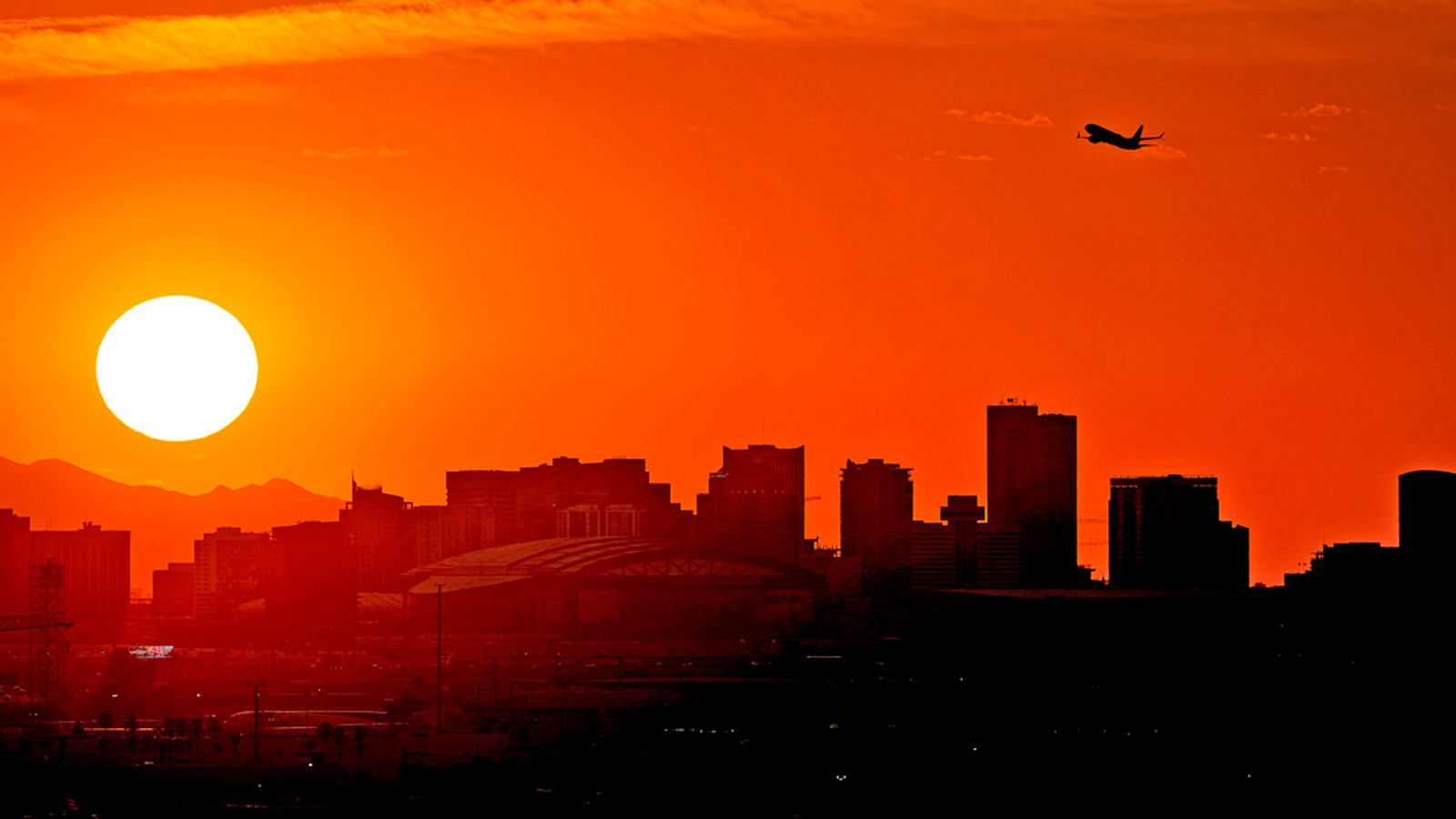Mexico City modern metro meets ancient Aztec life
Feb 9, 2012, 7:55 PM
Associated Press
MEXICO CITY (AP) – After two hours’ grueling drive southeast from the center of Mexico City, through paralyzing traffic jams and clouds of throat-burning smog, the bleached-white haze of air pollution gives way to pale-blue sky.
In a flat-bottomed boat tied to a willow tree, Crispin Matteos Galicia hauls up sediment in a plastic bucket to fertilize squash seedlings for his chinampa, an island farm built in the shallow waters flowing from the Lake of the Aztec Kings.
It’s a routine that’s played out for hundreds of years in the waters that used to cover the Valley of Mexico. But just over the treeline, the future is coming.
Inside a freshly built train yard about a mile to the north, a massive crane lifts a gleaming orange train car from a flatbed truck bed and lowers it onto the tracks of the city’s new subway line, a $1.7-billion project running 15 miles from the semi-rural borough of Tlahuac into the southwestern part of fully urbanized Mexico City.
The 20-station Line 12, or Golden Line, is expected to open this summer and carry some 437,000 passengers a day across the southern part of Mexico City, halving a commute that added up to more than four hours a day by bus or car for many people living in and around Tlahuac.
Few people in the borough deny the benefits of the Golden Line. But for many, its arrival is also a sign that the slow rhythms of their unique little piece of Mexico City soon will come to an end.
Tlahuac is one of the last places in the world where people still farm chinampas, fields created by piling earth on a lakebed and fixing it with willow trees planted around the edges. Indigenous people and their descendants have grown zucchinis, melon, squash and other produce on chinampas in Tlahuac since pre-Hispanic times. But the number of chinampa farmers in Tlahuac has dwindled as the borough has grown and urbanized and residents increasingly make their living in more modern professions.
The abandonment of Tlahuac’s chinampas for jobs and work in the city center will almost certainly accelerate once the Golden Line arrives, residents say.
Antonio Palacios Martinez is one of the last people in Tlahuac to still make his living on the water, poling his wooden boat along the canals and pointing out coots, herons and moorhens for the handful of local tourists who hire him.
He knows, he says, that business will pick up once people can take a 3-peso (23 cent) metro ride to Tlahuac from virtually anywhere in Mexico City.
But that’s little compensation for the possible erosion of traditional Tlahuac, the 35-year-old said.
“Everybody used to know the chinampas and come to work in the chinampas, even the children,” Palacios said. “Now most of the young people are professionals. They don’t feel like going to break their backs in the sun.”
A few miles closer to the city center, the canals of the borough of Xochimilco are filled with tourists who flock to what some call the Venice of Mexico to see a small piece of what the valley looked like before the Spaniards started to drain it.
Water pollution and encroaching development, both legal and illegal, are eating up what remains of the sensitive wetlands in the UNESCO World Heritage Site. That’s also pushing the axolotl, a foot-long salamander with a distinctive, seemingly smiling face, to the brink of extinction.
“Xochimilco’s chinampas are already filled with houses,” said Matteos, 42, as he prepared his chinampa’s seedbed for planting. “If there’s a lot of concrete here, water won’t fill the aquifers.”
The heart of Tlahuac still looks like a town in the Mexican countryside, complete with a quiet central plaza and a colonial-era church. But fast-food restaurants, dense cinderblock housing developments and bumper-to-bumper traffic are spreading down the main thoroughfare from Mexico City’s center to Tlahuac, pushing almost through the borough of more than 360,000 people to the farthest eastern edge of the city, where it abuts the neighboring State of Mexico.
It’s a pattern that repeated itself for decades as Mexico City sprawled out toward the edges of the valley, swallowing up small towns, complete with cobblestone streets and colonial squares, and turning them into traffic-choked neighborhoods of one of the world’s largest urban areas.
The Golden Line is designed to make some of that growth more sustainable and environmentally friendly, creating an east-west public transit connection across the southern end of the Valley of Mexico, bringing train service to some of the city’s most densely populated neighborhoods and allowing easier transfers between four lines that currently run north to south.
Most of Mexico City’s subway system was built in the 1980s and looks it _ its cars and stations are well-tended but worn-down, and often packed uncomfortably tight with crowds of commuters. The Golden Line’s Spanish-designed cars will be faster and more spacious, and the Tlahuac terminal will even feature a nursery for the children of people heading to work.
“The fundamental reason for the project was to respond to the people’s demand for secure, efficient and economical transportation,” said Enrique Horcasitas, director of the Line 12 project.
But Palacios fears the encroaching urban development that’s already cut the flow of water into the canals and turned them from algae-green to the color of chocolate and coffee.
“The ecosystem is changing drastically,” said Palacios. He pointed to houses whose wastewater drains emptied directly into the Lake of the Aztec Kings. He also blamed the construction of the Golden Line’s final stop and train yards for eating up a chunk of the local wilderness.
“They covered the little channels and built over them” Palacios said. “The wildlife that was there, in the untouched areas, they had to move because of the construction.”
When the line opens, he said, “you’ll be able to get into the city quicker, but there won’t be any benefit other than the commute.”
Lupe Martinez, a 70-year-old farmer in the region, said he had accepted the inevitable. The Golden Line is progress, he said, while turning his dry melon field by hand.
“For me it’s a thing of beauty,” Martinez said. “It’ll take you to every part of the city. I never thought I’d be able to get here on the metro.”
(Copyright 2012 The Associated Press. All rights reserved. This material may not be published, broadcast, rewritten or redistributed.)









